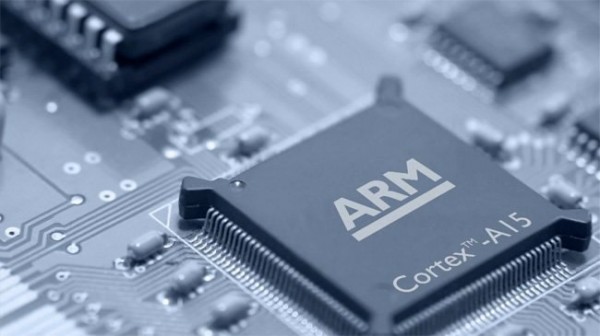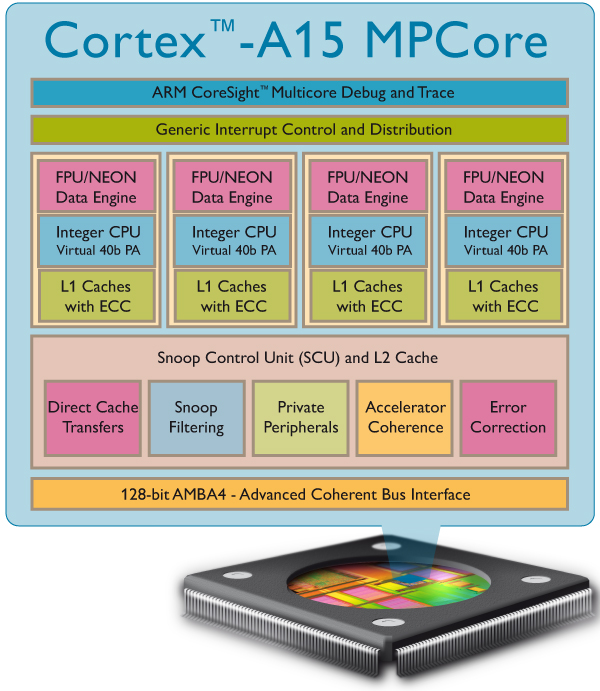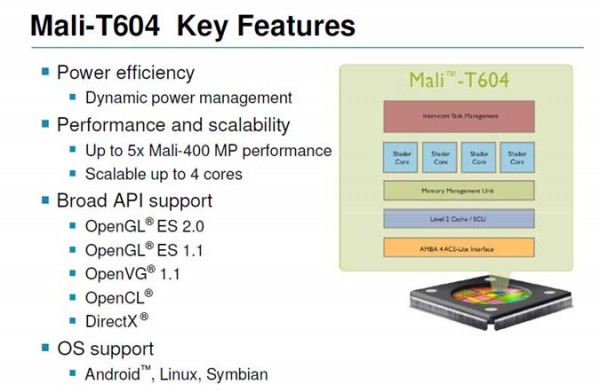LG will release its mobile processor
The past year has given us a lot of interesting technology, and interesting not only from the "user" side, but also from the point of view of technology. We did not stand aside, and we want to please you: LG is going to join the race for mobile chipsets in order to compete more closely with another South Korean electronic giant.

The first developments and characteristics promised to be shown at CES 2013, but some information is available now. The new processors will be built on the most modern seventh-generation ARM architecture, the Cortex-A15 and Cortex-A7 cores will become the “hearts” of the new processors. Also, processors based on the big.LITTLE architecture can also appear, providing good energy efficiency indicators in non-resource-intensive tasks, and amazing performance when you really need it.
Its peculiarity lies in the use of two types of cores inside one chip at once - A7 and A15, united by a special controller that provides load balancing and automatic connection of powerful A15 cores when necessary, and it is completely invisible to the OS and high-level applications.
The new Cortex A7 cores are a simplified version of the Cortex A9, devoid (by analogy with Intel Atoms) of an extraordinary execution of instructions, due to which the wiring and architecture of the crystal are greatly simplified, and energy consumption is reduced. In everyday and non-resource-intensive operations (working with the OS, working in the background, low-demand applications such as instant messengers and clients of social networks), the decrease in performance on the background of A9 will not be noticeable due to the increase in clock speed and undemanding of such programs to computing resources. In addition, the A7 received a built-in (and not optional, as it was on the A8 and A9 architectures) block for multimedia instructions and NEON floating-point operations. The conveyor remained eight-speed.


Cortex A15 is a new and high-performance solution, which is a further ideological development of the A9 architecture in the field of computing speed. Three instruction decoders, 15+ conveyor steps, execution of extraordinary instructions, high clock speed, full support for SMID instructions, floating point operations, NEON - a kind of Core i7 among the "mobile" chips. About him there is excellent material on the hub, read at your leisure.


Thus, the new cores used under one heat-distributing cover is an attempt to “embrace the immense”, making the processor faster and more economical than the previous generation. Cortex A15 dual-core solutions show comparable (and sometimes even greater) performance than modern A9-core, and A7 cores provide energy efficiency and device operation when computing resources of a higher-performance part are not required.

As a graphics accelerator, one of the fastest mobile GPUs currently mobile will be used - the Mali 600th series. Its quad-core version is already used in the new tablet from Google and provides excellent performance in films and games on the display with a resolution of 2560x1600 pixels.

Unfortunately, it is not known which version of the graphics accelerator will be used in the “smartphone” and “tablet” versions of the processor, but in the Smart TV version, given the capabilities of top-end solutions for processing video signals in 4K resolution and the technologies we already have for producing such matrices most likely, one of the eight-core Mali T6 * 8 chips will be used.

In an official interview with the Korean media, the company’s management noted that the release of its processors will improve the performance of smartphones and Smart TV systems, as well as significantly improve energy efficiency and energy saving in mobile devices.
The official representative also commented on the development and serial production of new generation chips:
“We have assembled a team of more than 900 specialists in the field of development and improvement of mobile processors that will work on new, powerful and energy-efficient“ flame motors ”of smartphones and smart TVs. The first prototypes are already being tested, but their characteristics are kept secret, as is the start date for mass production, which is likely to be placed at the facilities of TSMC (Taiwan Semiconductor Manufacturing Company), which has at its disposal technology for the production of 28 and 20 NM chips. ”
As you can see, progress does not stand still, and we try to keep up. We hope that next year flagship (and not only) devices will be released on their “native” microprocessors, and will be able to please end users (that is, us) with improved performance and autonomy. Follow our news, we will definitely return to this topic as soon as we have additional information. Happy New Year to all and see you on the pages of our blog.

The first developments and characteristics promised to be shown at CES 2013, but some information is available now. The new processors will be built on the most modern seventh-generation ARM architecture, the Cortex-A15 and Cortex-A7 cores will become the “hearts” of the new processors. Also, processors based on the big.LITTLE architecture can also appear, providing good energy efficiency indicators in non-resource-intensive tasks, and amazing performance when you really need it.
Its peculiarity lies in the use of two types of cores inside one chip at once - A7 and A15, united by a special controller that provides load balancing and automatic connection of powerful A15 cores when necessary, and it is completely invisible to the OS and high-level applications.
Cortex a7
The new Cortex A7 cores are a simplified version of the Cortex A9, devoid (by analogy with Intel Atoms) of an extraordinary execution of instructions, due to which the wiring and architecture of the crystal are greatly simplified, and energy consumption is reduced. In everyday and non-resource-intensive operations (working with the OS, working in the background, low-demand applications such as instant messengers and clients of social networks), the decrease in performance on the background of A9 will not be noticeable due to the increase in clock speed and undemanding of such programs to computing resources. In addition, the A7 received a built-in (and not optional, as it was on the A8 and A9 architectures) block for multimedia instructions and NEON floating-point operations. The conveyor remained eight-speed.


Cortex a15
Cortex A15 is a new and high-performance solution, which is a further ideological development of the A9 architecture in the field of computing speed. Three instruction decoders, 15+ conveyor steps, execution of extraordinary instructions, high clock speed, full support for SMID instructions, floating point operations, NEON - a kind of Core i7 among the "mobile" chips. About him there is excellent material on the hub, read at your leisure.


Thus, the new cores used under one heat-distributing cover is an attempt to “embrace the immense”, making the processor faster and more economical than the previous generation. Cortex A15 dual-core solutions show comparable (and sometimes even greater) performance than modern A9-core, and A7 cores provide energy efficiency and device operation when computing resources of a higher-performance part are not required.

Mali 600
As a graphics accelerator, one of the fastest mobile GPUs currently mobile will be used - the Mali 600th series. Its quad-core version is already used in the new tablet from Google and provides excellent performance in films and games on the display with a resolution of 2560x1600 pixels.

Unfortunately, it is not known which version of the graphics accelerator will be used in the “smartphone” and “tablet” versions of the processor, but in the Smart TV version, given the capabilities of top-end solutions for processing video signals in 4K resolution and the technologies we already have for producing such matrices most likely, one of the eight-core Mali T6 * 8 chips will be used.

Official information
In an official interview with the Korean media, the company’s management noted that the release of its processors will improve the performance of smartphones and Smart TV systems, as well as significantly improve energy efficiency and energy saving in mobile devices.
The official representative also commented on the development and serial production of new generation chips:
“We have assembled a team of more than 900 specialists in the field of development and improvement of mobile processors that will work on new, powerful and energy-efficient“ flame motors ”of smartphones and smart TVs. The first prototypes are already being tested, but their characteristics are kept secret, as is the start date for mass production, which is likely to be placed at the facilities of TSMC (Taiwan Semiconductor Manufacturing Company), which has at its disposal technology for the production of 28 and 20 NM chips. ”
Instead of a conclusion
As you can see, progress does not stand still, and we try to keep up. We hope that next year flagship (and not only) devices will be released on their “native” microprocessors, and will be able to please end users (that is, us) with improved performance and autonomy. Follow our news, we will definitely return to this topic as soon as we have additional information. Happy New Year to all and see you on the pages of our blog.
